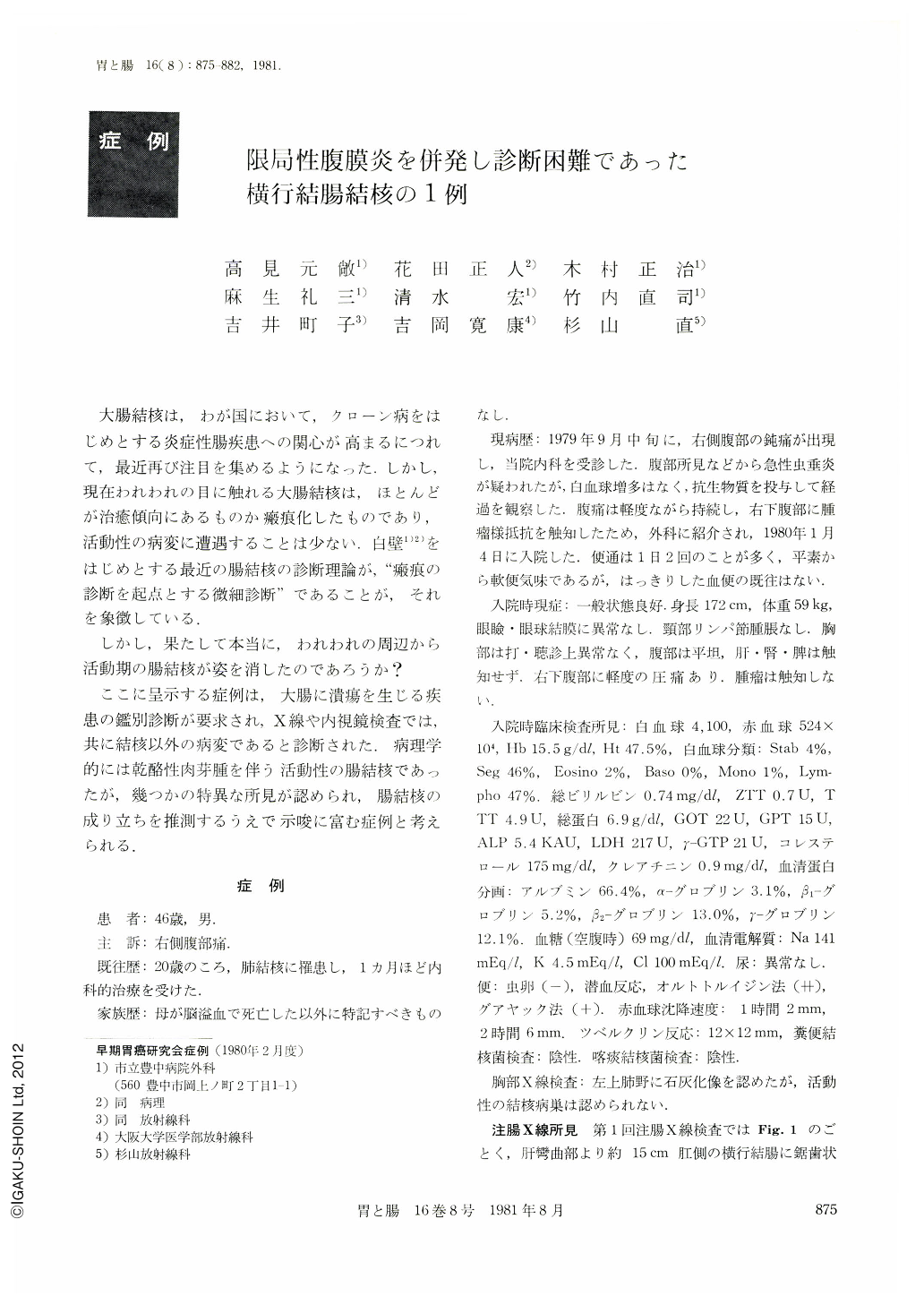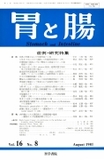Japanese
English
- 有料閲覧
- Abstract 文献概要
- 1ページ目 Look Inside
大腸結核は,わが国において,クローン病をはじめとする炎症性腸疾患への関心が高まるにつれて,最近再び注目を集めるようになった,しかし,現在われわれの目に触れる大腸結核は,ほとんどが治癒傾向にあるものか瘢痕化したものであり,活動性の病変に遭遇することは少ない,白壁1)2)をはじめとする最近の腸結核の診断理論が,“瘢痕の診断を起点とする微細診断”であることが,それを象徴している.
しかし,果たして本当に,われわれの周辺から活動期の腸結核が姿を消したのであろうか?
ここに呈示する症例は,大腸に潰瘍を生じる疾患の鑑別診断が要求され,X線や内視鏡検査では,共に結核以外の病変であると診断された.病理学的には乾酪性肉芽腫を伴う活動性の腸結核であったが,幾つかの特異な所見が認められ,腸結核の成り立ちを推測するうえで示唆に富む症例と考えれる.
Lately, most of cases of intestinal tuberculosis encountered in this country are about those of healing or healed stages of the disease. This report is concerned with a case of active tuberculous colitis involving the transverse colon.
The patient, a 46-year-old man, entered to the hospital with a complaint of right lower abdominal pain of four months duration. He denied bloody stools, diarrhea, fever, and weight loss, but gave a history of pulmonary tuberculosis at the age of 20. At admission, the abnormal physical finding was limited to the abdomen, where there was only slight tenderness in the right lower quadrant; no mass was palpable. Examination of stools showed 2+ occult blood. Cultures of the sputum and stool were negative for acidbacilli. Chest x-ray showed calcification in the left apex, attributable to healed tuberculosis. Barium enema studies demonstrated a non-circular, irregular shaped, shallow ulcer accompanied by convergency of the mucosal folds, about 15cm distal from the hepatic flexure. There was also a downward displacement of the diseased bowel toward the right colon.
The ileocecal region was somewhat deformed. On colonoscopic examination. the ulcer was sharply demarcated by slightly elevated mucosa, reminiscent of Borrmann-2 type carcinoma. Biopsy, however.
showed non-caseating epithelioid granulomas with giant cells, suggestive of either tuberculosis or Crohn's colitis. At the time of operation, there were intense inflammatory adhesions and localized caseating material between the diseased segment of the transverse colon and the ileocecal region including the lower ascending colon. Frozen sections from enlarged mesenteric lymph nodes showed caseating granulomatous inflammation compatible with tuberculosis. Other abdominal organs appeared normal. A right hemicolectomy was performed with no complications. Pathologic examination confirmed the diagnosis. The findings were an ulcerative tuberculous colitis of the transverse colon with continuous involvement of the adjacent pericolic adipose tissue and the ascending colon, fistula formation between the transverse and ascending colon, and tuberculous lymphadenitis of mesenteric lymph nodes. Acid-bacilli were demorstrated from the lesion by special-stained tissue sections as well as cultures.

Copyright © 1981, Igaku-Shoin Ltd. All rights reserved.


